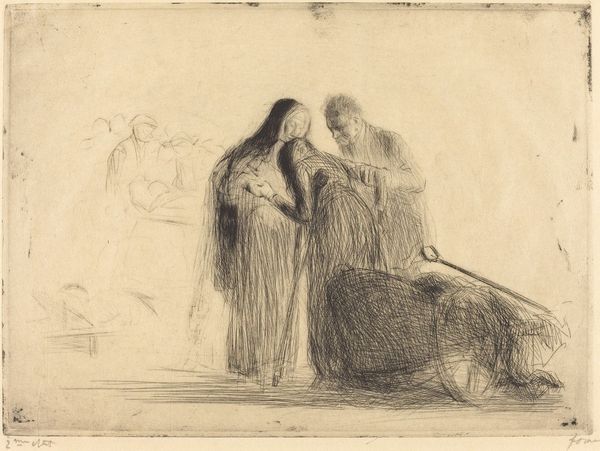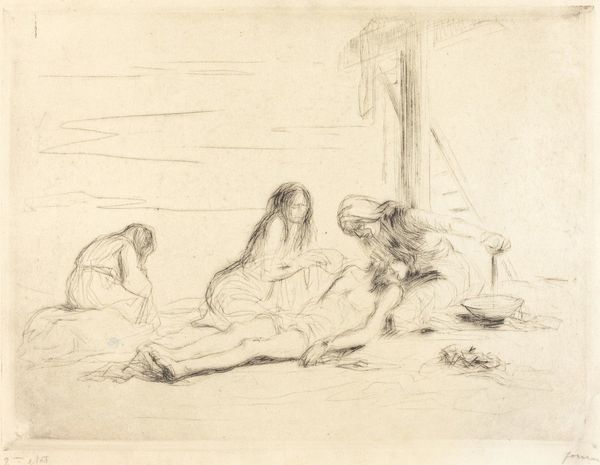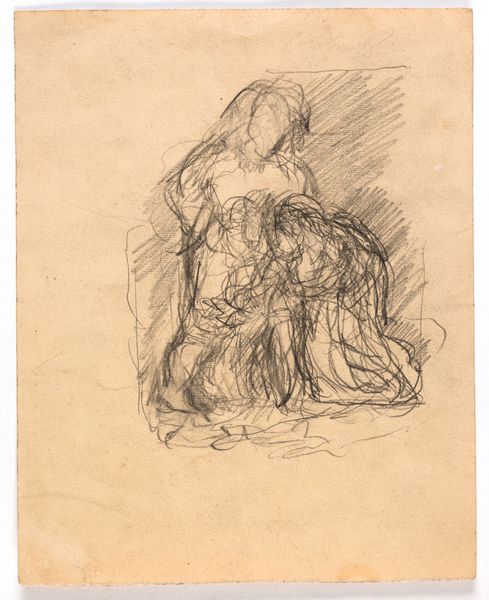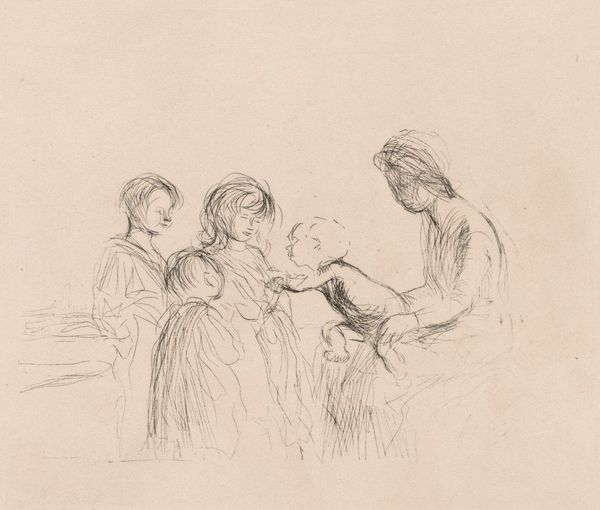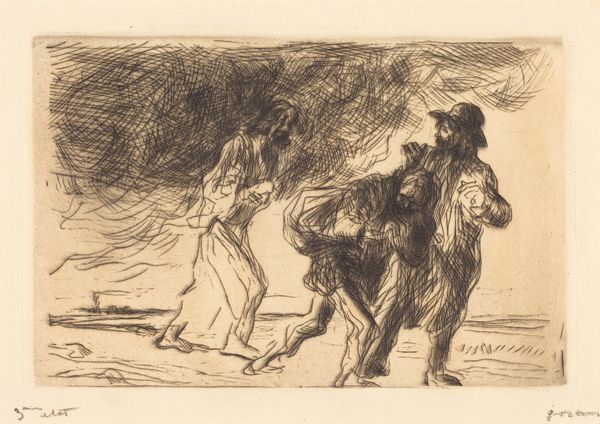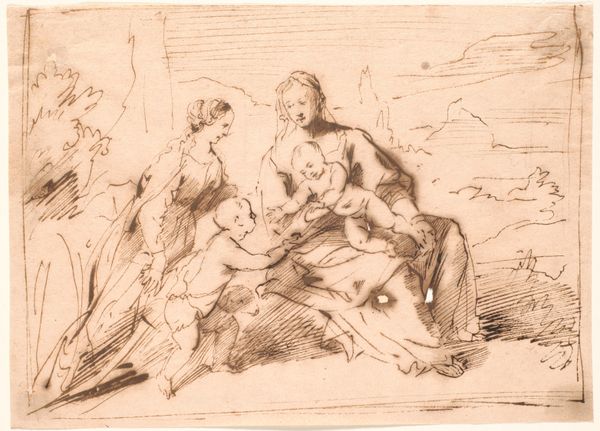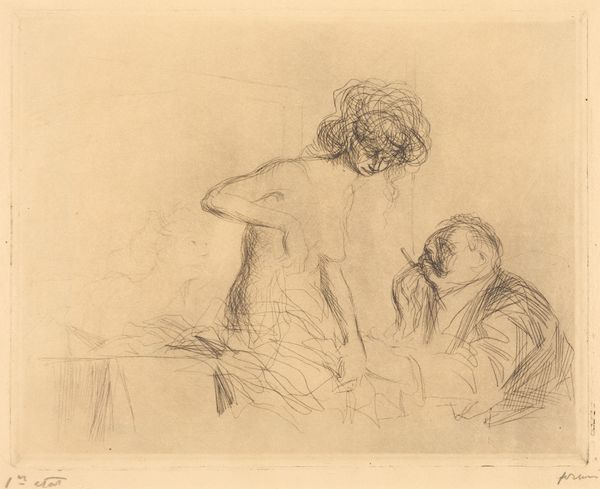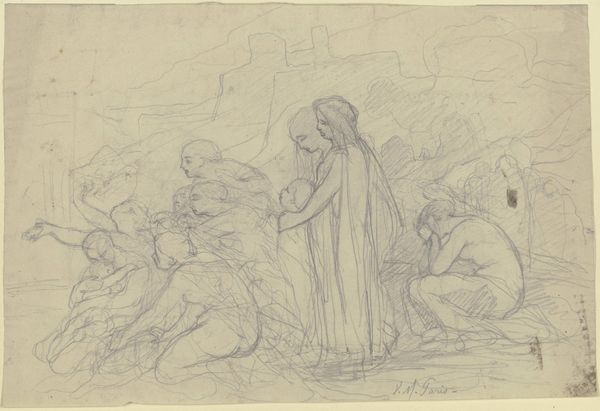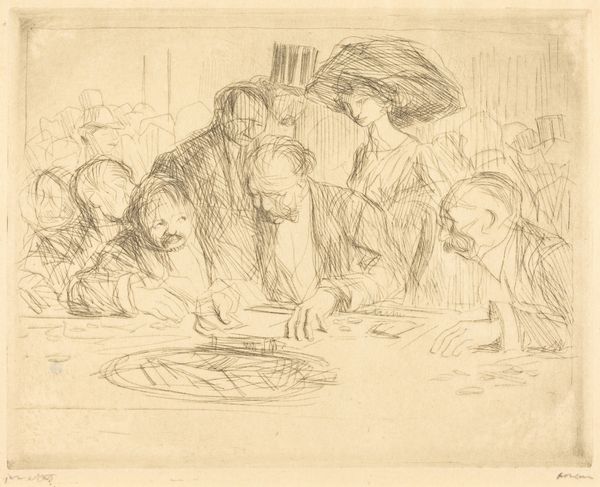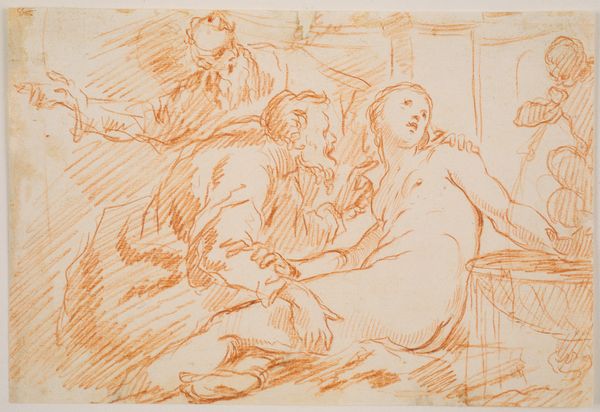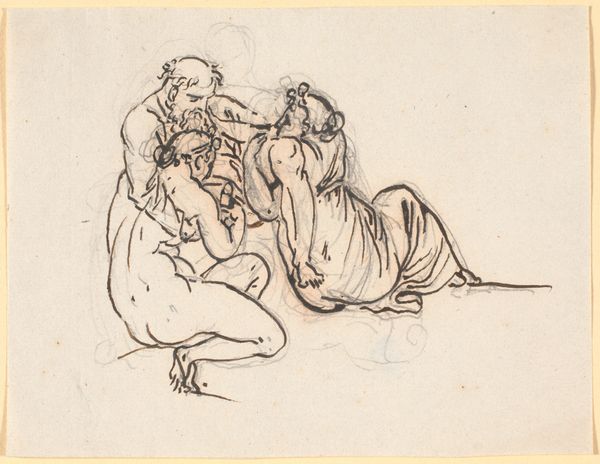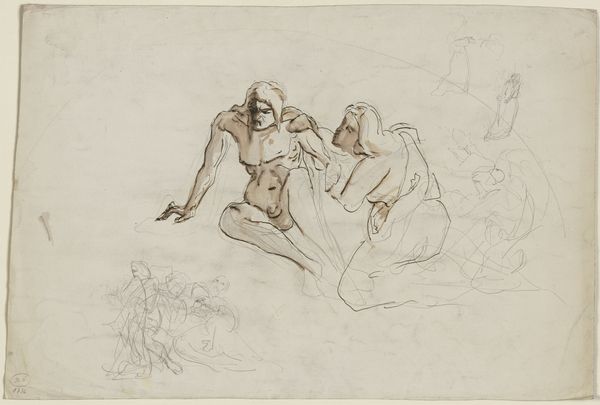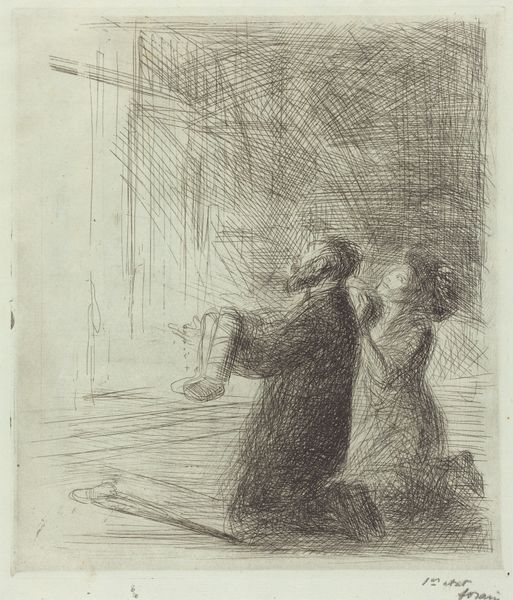
Copyright: National Gallery of Art: CC0 1.0
Editor: So this is "Lourdes, the Paralytic (second plate)," an etching by Jean-Louis Forain from around 1912-1913. It feels…unfinished, almost ghostly. There are these huddled figures in the foreground and fainter ones in the background. What’s your take on what Forain is trying to say here? Curator: Well, considering Forain's career, especially his work with satirical publications, it's crucial to analyze this print within its socio-political context. The pilgrimage site of Lourdes was a major cultural phenomenon at the time, heavily debated and often depicted in ways that reinforced social biases about faith, class, and health. Do you see any hints of that tension here? Editor: I guess the setting feels almost…clinical? Less like a sacred space and more like an infirmary. Is that a purposeful subversion, do you think? Curator: Exactly. Forain presents Lourdes not as a site of miraculous healing, but as a place of suffering and, arguably, exploitation. Look at the central figures, their faces obscured, emphasizing their vulnerability and potentially criticizing the spectacle around their faith. The "unfinished" quality you noted could reinforce this by highlighting the uncertain, almost intangible nature of their hope. It avoids idealizing religious experiences. How does that reading resonate with you? Editor: It definitely shifts my perspective. I initially focused on the artistic style, but framing it within the context of the Lourdes debates makes it much more pointed. I never thought about how even religious imagery could become political commentary. Curator: And that’s where art becomes incredibly powerful. Forain isn't just depicting a scene; he’s critiquing an institution and the way society treats its most vulnerable. The image serves as a document of its time, provoking discussions that are surprisingly relevant today. Editor: This was eye-opening! Thinking about art as a reflection of the socio-political climate adds a whole new layer. Curator: Absolutely. It reminds us that art always exists in a dialogue with its context. There is always more to explore than meets the eye.
Comments
No comments
Be the first to comment and join the conversation on the ultimate creative platform.
